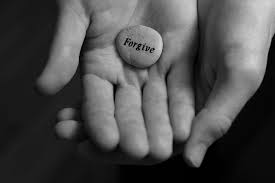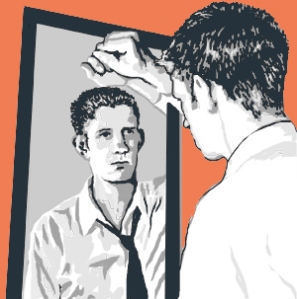It felt like a daunting task to tackle a topic that seemed as broad as “nutrition philosophy,” especially speaking as a Registered Dietitian Nutritionist working in eating disorder recovery. I began reflecting on my own journey in an effort to orient myself in this sea of vast opinions and differing experiences. I have wandered through and tried a myriad of ideas on healthy eating, wellness, healing, cleansing, and detoxing all in an effort to “feel better.” There came a point, though, when I was tired of living my life based around what I could, couldn’t, should, and shouldn’t eat for that elusive moment of final absolution from any physical, mental, and emotional ailment I might be trying to solve.
One day, I had an epiphany that all of the stress I might be incurring from trying to maintain whichever diet I was pinning my hope of salvation on and the guilt I experienced when I “transgressed” that said philosophy, was likely worse than any possible threat I might be experiencing from my food choices.

In his book, Nourishing Wisdom, Marc David explores the psychology of eating and notes a similar finding, “Ironically, any benefits of the diet are often outweighed by the tension and anxiety built up in maintaining it. The guilt experienced when eating forbidden food creates more toxins in the system than the actual food. Furthermore, the tension caused by resisting forbidden food can be equally toxic.”
We each inherently view life through the lens of our own ideas, experiences, goals, and vulnerabilities. When we combine this with the constant barrage of various diet trends and fads, nutrition information, and misinformation, and marketed images of what is deemed “beautiful” for the moment, it is easy to see how one can feel like they are lost at sea when approaching their own nutrition philosophy.
Opinions on what “healthy eating” is varies greatly from one person to the next and are undoubtedly influenced by trendy diets and fads, societal body image pressures, and personal desires or even fears. We strike out on each new diet journey made more buoyant by the promise or hope of health, happiness, love, acceptance, and whatever other word or idea one might attach to those things.
As a Registered Dietitian Nutritionist, most people think I’m supposed to teach them “how to eat healthy;” meaning their perception of what healthy foods are, and only these foods. I have often been approached in a “won’t you please slap a meal plan on me and fix me” manner by friends, colleagues, and clients alike. It’s no secret that the foods and beverages we choose to ingest influence us on every level – physical, mental, emotional, and spiritual. In fact, that is one of the things that drew me to the field of nutrition. It was the concept that Hippocrates elucidated near 500 B.C., “Let food be your medicine and medicine be your food.”
Food can be wonderfully healing, nourishing, pleasurable, and supportive. However, there is another aspect to eating that tends to go often unaddressed in this country and especially for those in the grip of an eating disorder, and that is how we relate to our food. It is the concept that what we bring to the table – physically, mentally, emotionally, and spiritually – matters just as much, if not more than, the foods we choose to eat.
Marc David further expands this concept in Nourishing Wisdom: “Many of us are concerned about health and search for ways to prevent disease through diet and supplements, yet we often overlook the importance of an ingredient consumed at each meal – attitude. If you eat something ‘bad’ for you with an attitude of guilt and self-punishment, the experience of the food will certainly be unnourishing – any toxins in the meal are made doubly potent simply by adding fear. Yet the same food eaten with an attitude of celebration may have a very different reaction in the body. Likewise, the healthiest foods may prove unhealthy if the motivation for eating them is based on a fear of disease rather than a love of life.”
As a Registered Dietitian Nutritionist working in the field of eating disorder recovery, I begin by meeting my clients where they are at. We start to build a healing plan together by first learning what a meal plan looks like to acclimatize their bodies and minds to regular nourishment. Next, we start to explore their fears and usual pitfalls and learn how to bravely approach the uncomfortable for the sake of their recovery. On the journey from an eating disorder to healing we will redefine what healthy is for each client. Along their journey, we will likely talk about Intuitive Eating, what it means to be an intuitive eater, and how they can move toward being one.
Evelyn Tribole and Elyse Resch, Dietitians and nutrition therapists, wrote a book about Intuitive Eating. They have been able to define and scientifically support certain traits that characterize people who are able to eat intuitively. On Tribole’s website it is stated, “Intuitive eating is an approach that teaches you how to create a healthy relationship with your food, mind, and body – where you ultimately become the expert of your own body…It’s also a process of making peace with food.” When struggling with an eating disorder, you may not have some or even any of these traits or skills, but the good news is that you can gain these skills by practicing them.
Client can begin to work toward being an intuitive eater through these concepts: moving toward unconditional permission to eat – eating whatever your body is desiring with attunement, eating for physical rather than emotional reasons – learning to cope with emotions in ways other than with food or the lack thereof, reliance on internal cues of hunger and satiety – learning to trust themselves, and body-food choice congruence – meaning that the desire for nutritious food is present along with permission to eat the fun stuff.
I have personally found that healthy eating isn’t so much about the should’s or shouldn’t, rather, it is about permission with attunement and mindfulness. I have also professionally witnessed clients who have bravely dismantled their previous definitions of “healthy” and learned to embrace a more expansive and inclusive definition of what “healthy” means to them. Though the path isn’t as clear-cut, it certainly brings more freedom from food and weight obsession to the things in life that truly matter to them – they begin to live their lives again and more fully.
If you are struggling with an eating disorder and would like more information on how we can help you, please reach out to Inner Door Center at www.innerdoorcenter.com or by phone (248) 336-2868. We offer many levels of care as well as some free support groups. We would love to partner with you on your journey toward healing and freedom.
Written by Erika Schwan, RDN, LMT, RYT-200

![gratitude[1]](https://innerdoorcenterblog.files.wordpress.com/2016/04/gratitude1.jpg?w=296&h=296)


 ives in the wake of these stresses and heartaches. For anyone struggling with an eating disorder, these feelings can be amplified. Eating disorders are a multi-faceted disease that takes hard work, commitment, and courage to overcome. If you are struggling with an eating disorder, preparation and planning ahead can be helpful to combat the anxiety and concerns you may have during this holiday season. Here are some tips that may help to safely guide you through the holidays.
ives in the wake of these stresses and heartaches. For anyone struggling with an eating disorder, these feelings can be amplified. Eating disorders are a multi-faceted disease that takes hard work, commitment, and courage to overcome. If you are struggling with an eating disorder, preparation and planning ahead can be helpful to combat the anxiety and concerns you may have during this holiday season. Here are some tips that may help to safely guide you through the holidays.



